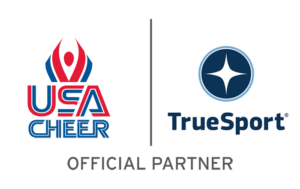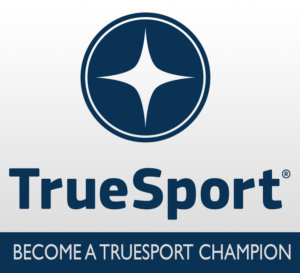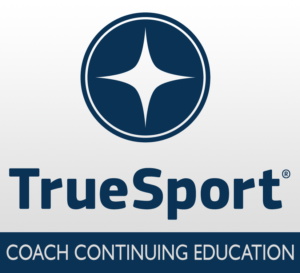6 Goals to Keep You Going After Life in Sport
USA Cheer has partnered with TrueSport, to provide new educational tools to equip coaches, parents and young athletes with the resources to build life skills and core values for success in sports and in life. TrueSport, a movement by the U.S. Anti-Doping Agency, inspires athletes, coaches, parents, and administrators to change the culture of youth sport through active engagement and thoughtful curriculum based on cornerstone lessons of sportsmanship, character-building, and clean and healthy performance, while also creating leaders across communities through sport.

6 Goals to Keep You Going After Life in Sport

Life after sport—or more specifically, life after organized sport—can feel scary. If you’re heading to college and not planning to play, or you’re dealing with an injury or upcoming surgery that has you sidelined, it can feel like you’re adrift. And that’s why setting goals outside of sport is so important for your overall well-being.
Here, TrueSport Expert Amanda Stanec, PhD, the founder and owner of MOVE + LIVE + LEARN, has a few tips for setting goals for a happy, healthy life after you’ve finished playing your current sport. But first, keep in mind that you’re ideally goal setting in other arenas before leaving sport. Even if things are going great in your sport, it’s a good idea to practice setting some non-sport goals, which can help you create wellness and identity outside of sport.
- Set a Goal to be Self-Aware
A good starting point for goal setting is determining how you’re actually feeling. And that means setting a goal to be more self-aware. “Self-awareness is identifying our strengths and our opportunities for growth,” Stanec says. The easiest way to start practicing this is to choose a problem that you’re currently having (it doesn’t have to be a big one!), then journal about potential causes and solutions. The better you get at this practice, the more aware you’ll be of how you’re feeling in every area of your life.
“A simple example is becoming aware that you don’t have energy at practice in the afternoon. You can then think about if you’re having a snack before practice, if you’re drinking enough water throughout the day, if you’re getting seven to nine hours of good sleep every night, or if there’s something that’s on your mind that’s distracting you from practice. After journaling on that, you might realize that you’re not going to bed early enough and need to set a timer to remind yourself when to get ready for bed each night.”
- Optimize Your Wellness Wheel
“The wellness wheel is a great assessment strategy because it really hits on all the different areas of life and will help us to work on enhancing our overall quality of life,” says Stanec. “I define success as feeling good about your place in the world and the wellness wheel helps you define what healthy success can look like. It will help you answer questions like, ‘What do I need to maintain?” and “What do I need more of in my life?’”

The wellness wheel is a circle made up of slices representing different areas of wellness: Physical, Emotional, Spiritual, Intellectual, Social, Financial, Occupational, and Environmental. You can also make up your own categories that feel more relevant to you: Occupational typically refers to a job, but for you, maybe that refers to school or extracurricular activities. And while Environmental typically refers to your overall physical environment, for you, it could simply be your car and room at home.
Draw your own Wellness Wheel as a circle or as a chart and ask:
- How am I doing in each category?
- Where can I improve the most?
- Where am I closest to achieving wellbeing?
For some athletes, Stanec suggests starting with the area you’re most lacking in. For instance, if you feel like you’re struggling with your social well-being, you could make a goal to call one friend weekly, have a movie night with a friend, or spend at least an hour having a real conversation with a parent. For some people, though, it’s easiest to start with the slice of the pie that’s closest to optimization to feel a quick sense of accomplishment and achievement. So if you’re already doing great intellectually—getting good grades, for example—could you add a goal of practicing your conversational Spanish every day for 10 minutes to improve your comprehension and pronunciation?
- Set Personality Goals

“When we think about what sport can give us, in addition to the physical play, we think about things like leadership, confidence, responsibility, communication, and initiative,” says Stanec. Think about the personality traits that you want to develop: Are you a great team leader, or are you lacking in communication skills? Do you have confidence on and off the field? If you’ve been playing sports for a long time and struggle to set goals outside of sport, it might be easiest to set goals that are sport-related, like being more confident on game day. Start there, and you can apply that skill to other areas of your life, like public speaking or test taking.
- Set Health Goals
Another easy non-sport goal to start with is a health-related goal. Health-related goals can feel easier for athletes who are used to focusing on their bodies first. Instead of setting goals around practice or competition, Stanec suggests zooming out and looking at overall health. How’s your sleep
quality? Struggling with nutrition? You may want to set a goal around eating three healthy meals per day plus snacks and enlist a registered dietitian to help you create a meal plan. For an injured athlete, a health goal could revolve around following through with physical therapy appointments and exercises.
- Set Anti-Goals

If setting goals beyond sport or without sport is difficult, try the reverse: Think about how you don’t want to feel. For some people, it’s easier to know what you don’t want versus what you do want. Stanec explains, “For example, if you’re a new college student, how do you want to spend your weekends? Do you want to feel exhausted and hungover? If you decide that you don’t want to feel lonely and lethargic, that could prompt you to join a triathlon club that practices together on Saturday or start a walking date with a few friends to make sure you’re staying active.”
Takeaway
Setting non-sport goals can help you create an identity outside of sport and develop overall well-being, which will help ease your transition away from organized sport.
What is TrueSport?
The TrueSport Champion Network is a community of coaches, parents, program directors, and athletes who believe in the power of youth sport to build life skills and core values for success both on and off the field. Join TrueSport Champion Network to help promote the positive values of cheer, dance, and STUNT!
The TrueSport Coaching Education Program empowers coaches—the most significant influencers in young athletes’ lives—with a transformative learning opportunity to obtain the knowledge and resources to cultivate, champion, and uphold the rich promise and highest potential of sport.
Additional Training Modules from TrueSport
USA Cheer is proud to partner with USADA’s TrueSport® to bring relevant educational content to the Cheer and STUNT community in order to promote a positive youth sport experience. We are excited to provide access to TrueSport’s experts that take coaching beyond skills and help truly develop the overall athlete by building life skills and core values for success on and off the mat, sideline, field, and court.
Feel free to share these resources with your coaching staff, parents, or athletes!
About TrueSport
TrueSport®, a movement powered by the experience and values of the U.S. Anti-Doping Agency, champions the positive values and life lessons learned through youth sport. TrueSport inspires athletes, coaches, parents, and administrators to change the culture of youth sport through active engagement and thoughtful curriculum based on cornerstone lessons of sportsmanship, character-building, and clean and healthy performance, while also creating leaders across communities through sport.
For more expert-driven articles and materials, visit TrueSport’s comprehensive LEARN resource.
This content was reproduced in partnership with TrueSport. Any content copied or reproduced without TrueSport and the U.S. Anti-Doping Agency’s express written permission would be in violation of our copyright, and subject to legal recourse. To learn more or request permission to reproduce content, click here.



